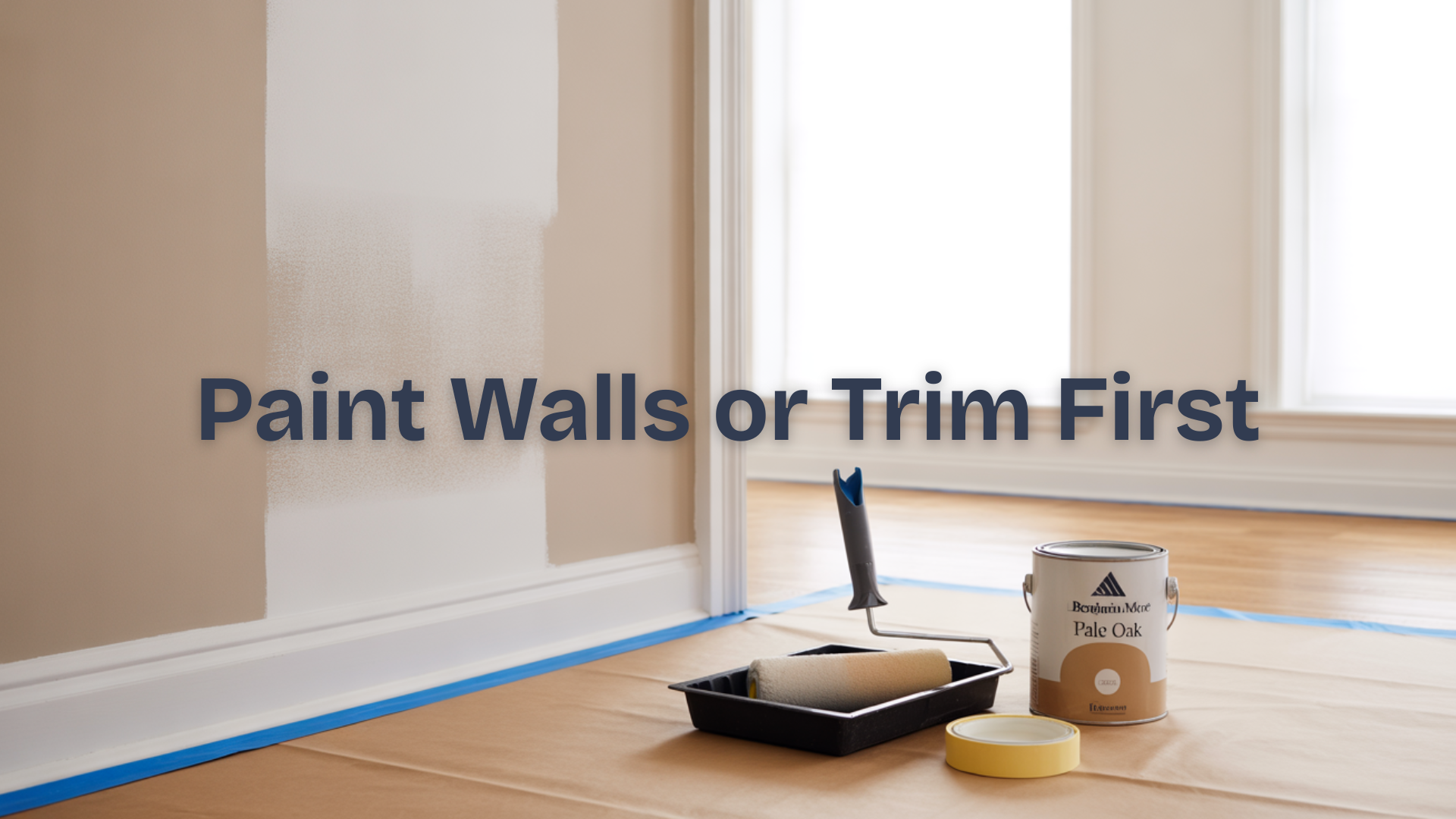You’ve just bought some paint. You’re excited to give your space a fresh new look. But then you pause and think—should I paint the walls or trim first?
That’s a good question. And you’re definitely not the only one asking it. Many DIYers, even pros, debate this topic. It might seem like a small thing. But the order you paint in can actually make a big difference.
Painting isn’t just about color. It’s about neatness. Time-saving. And keeping your sanity. If you paint the wrong part first, you might end up doing extra work later. And who wants that?
So in this blog, we’re going to talk all about it. Whether you’re painting a bedroom, living room, or hallway, this guide will help. We’ll look at the pros and cons of each approach. And I’ll even share what’s worked best for me. Let’s settle the “paint walls or trim first” question once and for all.
What is Trim Anyway?
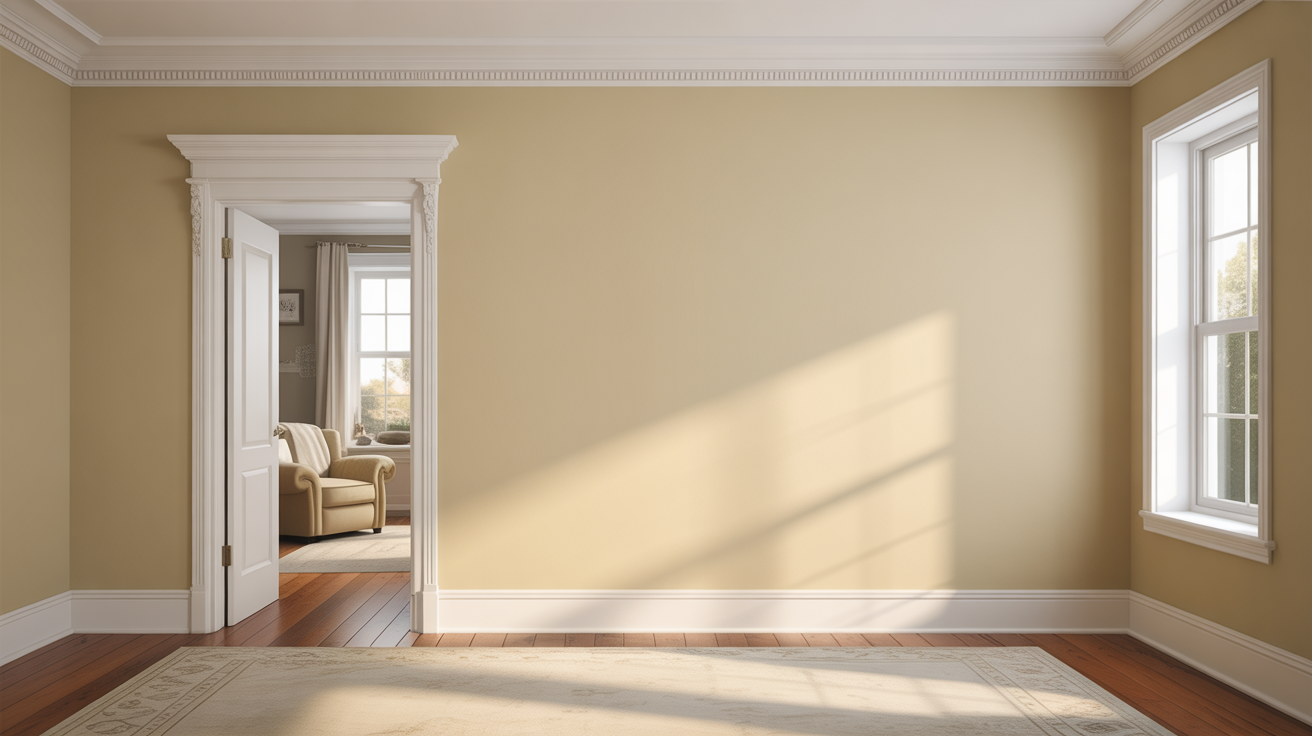
Before we get into the painting order, let’s clear this up.
Trim refers to the wooden parts around your room. That includes the baseboards. Window and door frames. And sometimes, crown molding near the ceiling.
These parts are usually painted a different color from your walls. Often, trim is white or a soft neutral tone. It adds contrast and gives the room a finished look.
Painting trim takes a steady hand. You’re often working along edges. And if you’re not careful, paint can bleed onto the walls. That’s why knowing whether to paint walls or trim first actually matters.
The Case for Painting Trim First
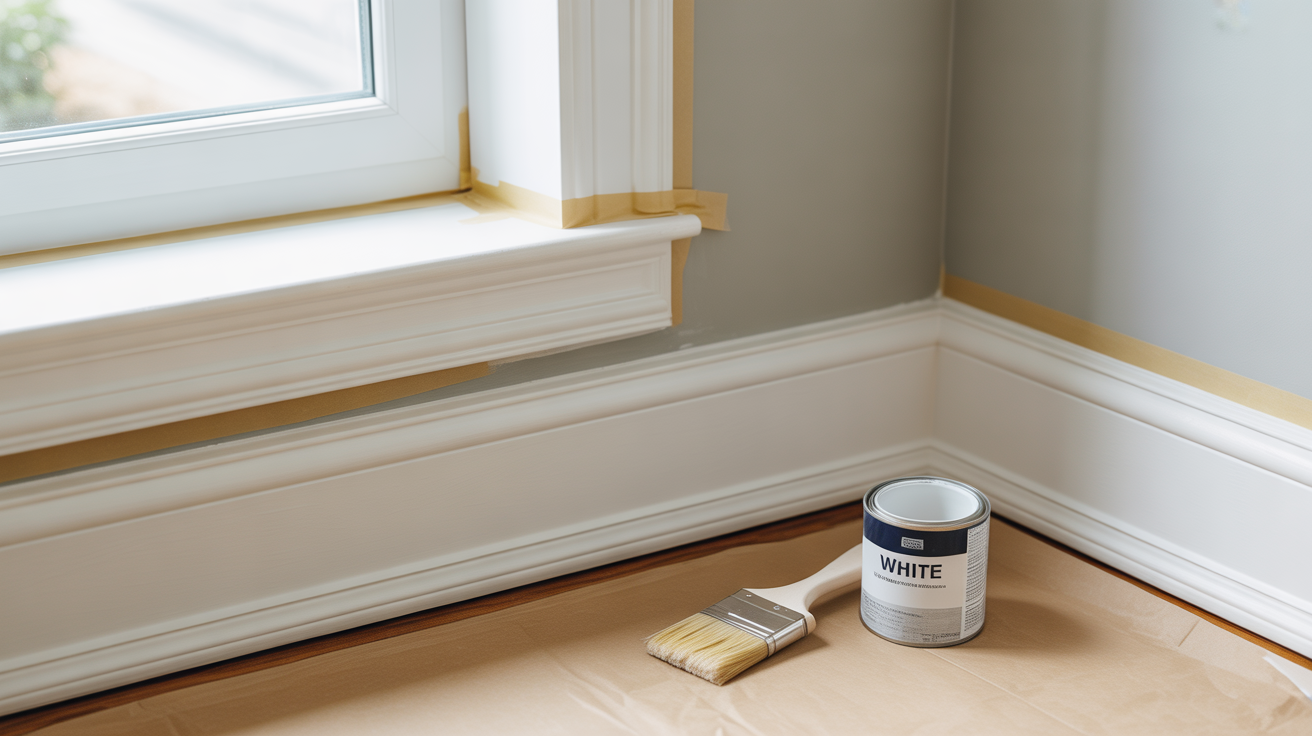
Some people swear by painting the trim first. And I’ll be honest—I’ve done it this way more than once. Here’s why some prefer this method:
Easier to Tape and Cover Later
If you paint the trim first, you don’t need to be too neat. You can let the paint get on the walls a little. Once it dries, you tape over the edges. Then you paint your walls right up to the trim. Clean lines. No stress.
Trim Paint is Thicker
Trim paint is usually oil-based or semi-gloss. That kind of paint dries hard. And it can be tricky to apply smoothly.
When you’re painting trim first, you can focus without worrying about ruining freshly painted walls. You can fix mistakes before they become a problem.
Cutting in Is Easier
“Cutting in” means painting the edges neatly. If the trim is already painted, it’s easier to run a brush along the wall edge.
You don’t have to be a perfectionist here. Any wall paint that gets on the trim can be touched up later.
When is it Best to Paint Trim First?
Painting the trim first can give you cleaner lines and a more polished finish. It’s especially helpful when the trim needs repairs or more careful work.
I’ve found this method works best when I want the final result to look really neat and fresh. Painting trim first works well if:
1. You’re Doing a Full Room Makeover
If you’re painting the walls, trim, and ceiling, and possibly adding new floors, it’s best to start with the trim first, as this keeps the process organized and saves time later. You can be a little messy while painting the trim since you’ll clean up the edges when you paint the walls afterward.
It’s easier to fix wall paint than redo clean trim work. This order just helps everything come together more smoothly.
2. Your Trim Needs Sanding, Patching, or Repairs
When trim is old, scratched, or dented, it needs extra prep before painting. You’ll likely have to fill holes, sand surfaces, or prime them before applying paint.
Doing this first prevents dust or patching mess from ruining your finished walls. Once your trim is in great shape and dry, you can move on to painting the walls without worry.
3. You’re Working with Tricky Trim Shapes or Details
If your trim has a lot of grooves, raised edges, or fancy designs, it’s better to tackle it first so you don’t rush through the hard parts later. These areas take more time and patience to get right.
When you paint the walls afterward, you can clean up any little marks or overlaps easily. It takes the pressure off doing it perfectly the first time.
4. You’re Planning to Use a Sprayer for Trim
Using a paint sprayer on trim gives it a smooth, even finish with no brush marks. But sprayers can be messy, and paint often ends up on the walls.
That’s totally fine if the walls haven’t been painted yet. Once the trim is dry, you can come back and roll or brush your wall color without needing to redo any trim edges.
5. The Trim Color is Much Lighter Than the Wall Color
If you’re painting white or cream-colored trim next to a bold wall color, it’s better to do the trim first. Lighter paints usually need more coats, and it’s easier to apply them without trying to avoid already-painted walls.
Later, the wall color will neatly cover any trim paint that went over the edge. This gives you cleaner lines without stress.
If your trim is in bad shape, this is the best approach. Get it done and dry first. That way, you don’t mess up your wall paint while fixing dents or cracks in the trim.
The Case for Painting Walls First
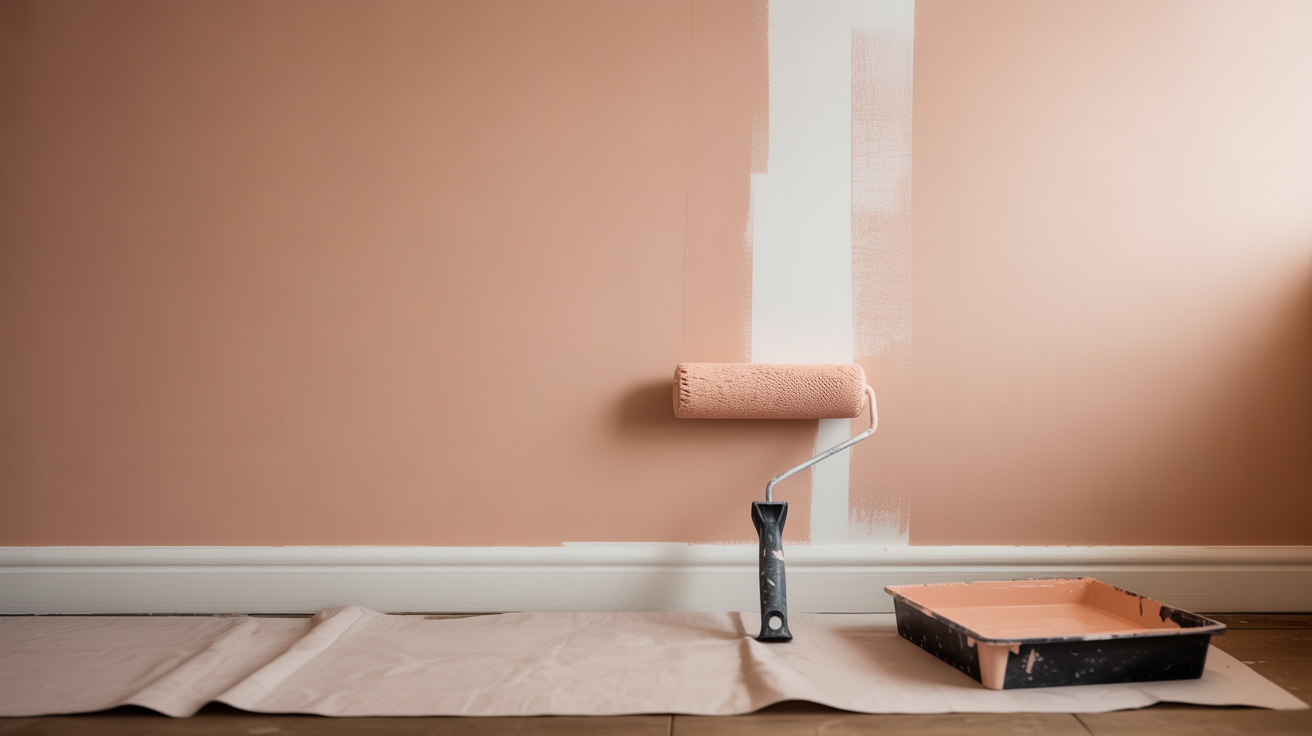
Now, some folks will say painting walls first makes way more sense. And I get it. There are a few solid reasons for starting with the walls.
It’s Faster
Painting walls is quick. You can roll large areas in no time. If you paint the walls first, you don’t have to worry about being careful near the edges. You just go for it. Then come back and clean up the trim.
Easier to Fix Trim Mistakes
When you paint the trim last, you get the final say. Let’s say you accidentally get some wall paint on the trim. No big deal—you’re painting the trim anyway. You can just cover it up later.
You Can Avoid Tape Altogether
Some painters are confident with a brush and don’t even use painter’s tape. They’ll paint the walls first. Then go back and carefully cut in along the trim with a steady hand. No tape. Just precision. If you’re good with brushes, this might be your favorite method.
When Should You Paint Walls First?
Painting the walls first can be a smart choice in the right situations. It’s often quicker and works well when your trim doesn’t need much attention. I’ve done it this way when I just wanted a fast refresh without overcomplicating things.
Painting walls first works best when:
1. You Only Plan to Change the Wall Color
If the trim looks good and you’re not repainting it, then it makes sense to just go ahead and do the walls first. You can roll paint quickly across the big areas and avoid wasting time taping off the trim.
You’ll still need to be a little careful near the edges, but it’s much faster overall. This works great when you want a simple refresh.
2. The Trim is Already Painted or Pre-finished
Sometimes, trim comes pre-painted or sealed, especially if it’s newer or part of a recent update. In that case, there’s really no reason to paint it again.
You can just focus on the walls and leave the trim as it is. This saves a ton of time and effort, especially if you’re happy with how it already looks.
3. The Room Has Little or No Trim at All
In very modern rooms or small spaces, there might not be much trim except for thin baseboards. If there’s very little to paint around, it’s easier to just get the walls done first. You won’t spend much time worrying about neat edges. And if you decide to touch up the trim later, it’ll be quick and easy.
4. You’re Comfortable Painting Straight Edges by Hand
If you’ve done painting projects before and feel confident with your brush, you might not even need painter’s tape. You can paint your walls first and then go back with a steady hand to trim out the edges.
This saves time and still gives you a neat, finished look. But only try this if you’re patient and have a good-quality brush.
5. You’re Using Flat or Matte Paint on The Walls
Wall paints that are flat or matte are less likely to show small mistakes. If you touch up an edge or go over the trim line slightly, it usually blends in pretty well. That makes it easier to paint the walls first and fix trim slips afterward. It’s a great choice if you’re going for a soft, modern look on the walls.
This method works great for quick makeovers or touch-ups. I’ve used this method in my guest bedroom when I was short on time. It worked out just fine. But I had to be careful near the edges.
Which One Should You Do First?
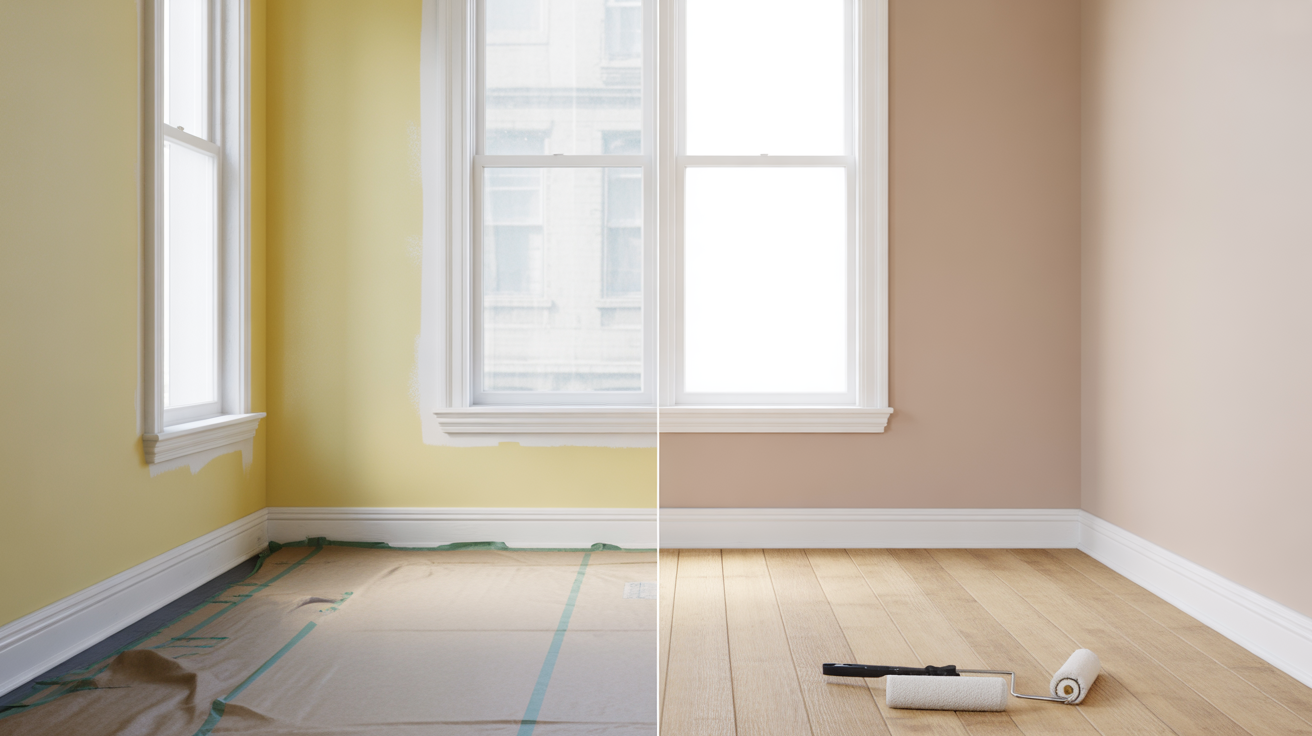
Okay, let’s settle this once and for all. Should you paint walls or trim first? The honest answer is—it depends.
If you’re doing a full room makeover, paint the trim first. It gives you more control. You can fix up dents, sand rough spots, and apply thick coats without worrying about splashes. Once it’s dry, tape it off and do your walls. You’ll get clean, pro-looking lines.
If you’re short on time or your trim is already perfect, paint the walls first. It’s quicker. You can roll large sections and get the job done fast. Just be prepared to touch up your trim later.
It also depends on your personality. Are you a planner? Detail-focused? You might love the “trim-first” method. Are you more casual? Want to get it done? Then “walls-first” might feel right.
My Honest Experience
I’ve done it both ways. When I first started painting, I painted the walls first. Mostly because I didn’t know any better. But I also didn’t want to deal with the trim.
Later, I realized it made more sense to fix up the trim first. Especially in older homes. The trim needed repairs. Some sanding. And multiple coats. Doing that before the walls gave me a cleaner look in the end.
In my last living room project, I painted the trim first. Then the ceiling. Then the walls. It took longer. But it looked amazing. The lines were crisp. And I didn’t have to redo anything.
So if you’re asking me what works best, I’d say start with the trim. But if you’re in a hurry, walls-first can still work. Just take your time near the edges.
Some Extra Tips to Make it Easier
Whichever way you choose, here are a few tips that can help:
- Use painter’s tape if you want cleaner lines.
- Don’t rush the drying time between coats.
- Get good brushes for trim work—angled brushes are a must.
- Use drop cloths to protect your floors.
- Don’t overload your brush with paint. Less is more.
- Be patient. It’s worth it.
Painting is one of the cheapest ways to upgrade a space. But it does take some effort. So do it right the first time.
Conclusion
So, what’s the best order—paint walls or trim first? The truth is, there’s no single rule. But there is a best choice for your situation. If your trim needs work, start there. You’ll get better results and avoid messy cleanups. If you’re doing a fast refresh, starting with walls might save time.
I always say this: paint is forgiving. You can fix almost anything with a little touch-up. So don’t stress too much. Just choose the method that fits your timeline, skill level, and room condition. You’ve got this!
If this helped you decide whether to paint walls or trim first, share it with a friend who’s stuck like you were. And if you’re planning your next painting project, bookmark this post. You’ll be glad you did!
Ready to paint your space? Choose your starting point and go for it. You’re closer to a refreshed home than you think.

